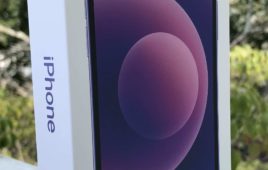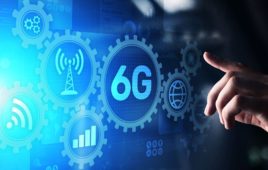M2M companies face tough times. So do wireless carriers.
Can they find a mutually useful savior in connected consumer products?.
Few people outside of the cellular industry are familiar with the three-letter acronym M2M as shorthand for machine-to-machine communications. But those in the know, when asked to characterize the focus of M2M applications, usually respond with just one word: industrial. It’s a surprise to most people that these companies are starting to look at consumer products.
Economic reasons are the biggest driver of the unexpected focus. The cellular phone market is approaching saturation in first-world nations. The traditional M2M market is growing, but its products are a tough sell to enterprises dealing with their own cutbacks and in need of immediate answers instead of just long-term potential savings. That’s led to wireless carriers and M2M virtual operators alike viewing connected consumer products as a possible holdover until their own respective markets pick up.
|
FOOT IN THE DOOR
An example is Telular, which sells a variety of alarm and remote monitoring hardware and services. The company was founded in 1986, went public in 1994, and acquired SupplyNet in 2008 to expand from alarms to storage tanks. Now, “we are looking possibly down the road at some consumer applications. We’ve been brainstorming,” said Chris Bear, vice president of product development. “We definitely are keeping that option open and looking at it very seriously.”
Bear understands it won’t be an easy move, as major carriers like AT&T, T-Mobile USA and Verizon Wireless are initially focusing on consumer devices like netbooks, digital picture frames and e-book readers.
“We’d like think we’d be able to get our foot in the door. Maybe a leg and torso eventually,” he joked. “From a technical side, it’s probably less arduous. From a company standpoint, we have a lot of challenges in terms of distributing, marketing, finding the right channels. And I think a lot of times it’s not as clear what the right product is.”
Another company, Jasper Wireless, is working through partners and already embarked on the risky road to retail. Jasper’s consumer work so far includes a GPS device from Dash Navigation; another GPS device featuring real-time updates about speed traps from Coyote Systems; a personal medical data monitor from Active4Life; and a device called eDiary from Arrowhead Electronic Healthcare to help participants track their activities in pharmaceutical studies.
When considering ways to expand the company a couple of years ago, Jasper’s Scott Barkley, vice president of products, saw all manner of ideas cross his desk. “It comes down to business process and vertical focus. We looked at all the usual suspects – fleet management being one, point-of-sale being the other – and yet consumer products are clearly different,” he noted.
“There are a number of operators who are foaming at the mouth to get this business. If you’re M2M, they’re going to point you to the enterprise, but if you say consumer electronics, they’re interested.”
ARPU ISSUES
A sticking point is average revenue per user (ARPU), Barkley said. Sometimes carriers put M2M revenue in a different line item because as useful as the technology is, it often works on low data rates and would drag down traditional ARPU statistics, which could defeat a carrier’s reason for wanting the traffic in the first place. In addition, “they don’t want to tweak the core network and they don’t want to tweak the systems. They’re looking for us to give a shrink-wrapped product” – similar to how landline carriers made adjustments during the onslaught of existing customers returning for modem and fax machine connections.
Toward that end, Verizon Wireless issued an update last month on the progress of its Open Development Initiative. Verizon issued specifications in March 2008 at a conference with 600 participating companies and soon after joined the LiMo Foundation to encourage Linux devices. Many devices were certified since then, almost entirely for specialty purposes. Looking to jumpstart the consumer side, Verizon is now reportedly working on competitors to the Amazon Kindle, which uses a Sprint Nextel connection.
|
In other words, the transition to consumer M2M devices is definitely coming, but it’s not going to be a speedy one, Gartner analyst Dan Miklovic explained. “That’s probably reasonable,” he said. For carriers, “their whole model is based off a consumer system,” while at the M2M companies, “they know more about reliability, end-to-end integrity, security and things like that because that’s what the industrial customer has been focused on.”
There is a precedent, Miklovic observed. General Motors’ OnStar system began consumer service in 1996, but its roots to telemetry systems from Hughes Electronics go back much farther. Similarly, the accelerometer technology in modern high-end smartphones such as the Apple iPhone has strong links to defense innovations. The market definition is so fluid that Gartner declines to make any projections about its size.
However, Miklovic did point out that it doesn’t take much data to make a connected consumer product useful. “What we found in the industrial market, and I’m sure it will apply in the consumer world as well, is incremental information has increasing value.”






